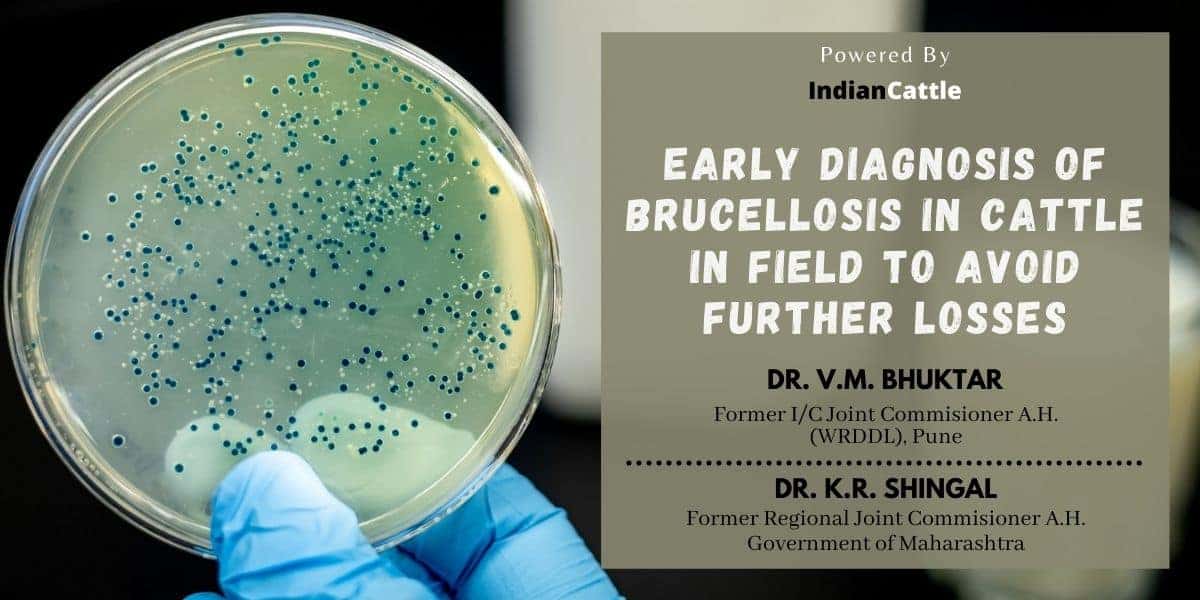
Early Diagnosis of Brucellosis at Field to Avoid Further Losses
Brucellosis is a bacterial disease caused by Brucella spp. and its occurrence is throughout the world causing severe impact on farmers’ income. Brucellosis spreads usually spread through contact with infected birthing tissues and fluids. In the laboratory, the organisms may be detected by culture and serology. The bacteria is present in abundance in the uterine fluids, urine, and milk and in occasionally in semen. Brucella infection in the herd or individual animals can be detected at the field level by doing the following test.
Milk Ring Test (MRT)
Material requirement
- Coloured antigen – 20 ml vial (This can be obtained from IVRI / IVBP)
- Test tubes – 10 ml capacity
- Incubator: Preferred, if you don’t have it can be done even during the day as in India, outside temperature would be around 34-37 oC.
MRT on pooled/ canned samples
In case you don’t have enough, reagents the test can also be done in pooled sera/milk sample. Do not pool sera of more than 10 animals if you do not know the incidence of the disease in the farm/village. It is advisable to do the test in individual animals if you are doing for the first time.
Method: Take a well-mixed milk sample 1 ml. in the test tube (preferably 4-5 ml capacity) and add 1 drop of coloured antigen. Mix several times gently. and incubate the above mixture at 37 degree C for 1 hour. With every batch of MRT samples one known positive control and known negative control should be incubated.
Result: Test should be read in the day-light or uniform light. If the red colour of upper cream layer is deeper than the lower milk column then the test is considered as positive. Result of controlled tubes should be taken first and then the test samples to ensure the testing procedure and the quality of the antigen.
Test-2. Plate Agglutination Test for Brucella: The test is also called Rose Bengal Test and is supplied with circled slides for better and quick comparison.
Material required
- Brucella abortus coloured antigen
- Serum from suspected animal
- Glass plate or glass slide
Procedure:
- Place one loopful of the suspected serum and one loopful of brucella abortus coloured antigen in a square of glass plate adjacent to each other.
- With the inoculation loop mix the reagent and rotate the slide from side-to-side to ensure good mixing and watch for any agglutination reaction.
Results:
Clumping will indicate a positive reaction. Compare with the positive and negative control.
Read: Diagnosis and Treatment of Mastitis in Cattle
| Dr. V. M. Bhuktar
Former I/c Joint Commissioner A. H. Western Regional Disease Diagnostic Laboratory (WRDDL) Pune M.S |
Dr. K. R. Shingal
B.V.Sc. & A.H., M.V.Sc., N.D.B.P |
